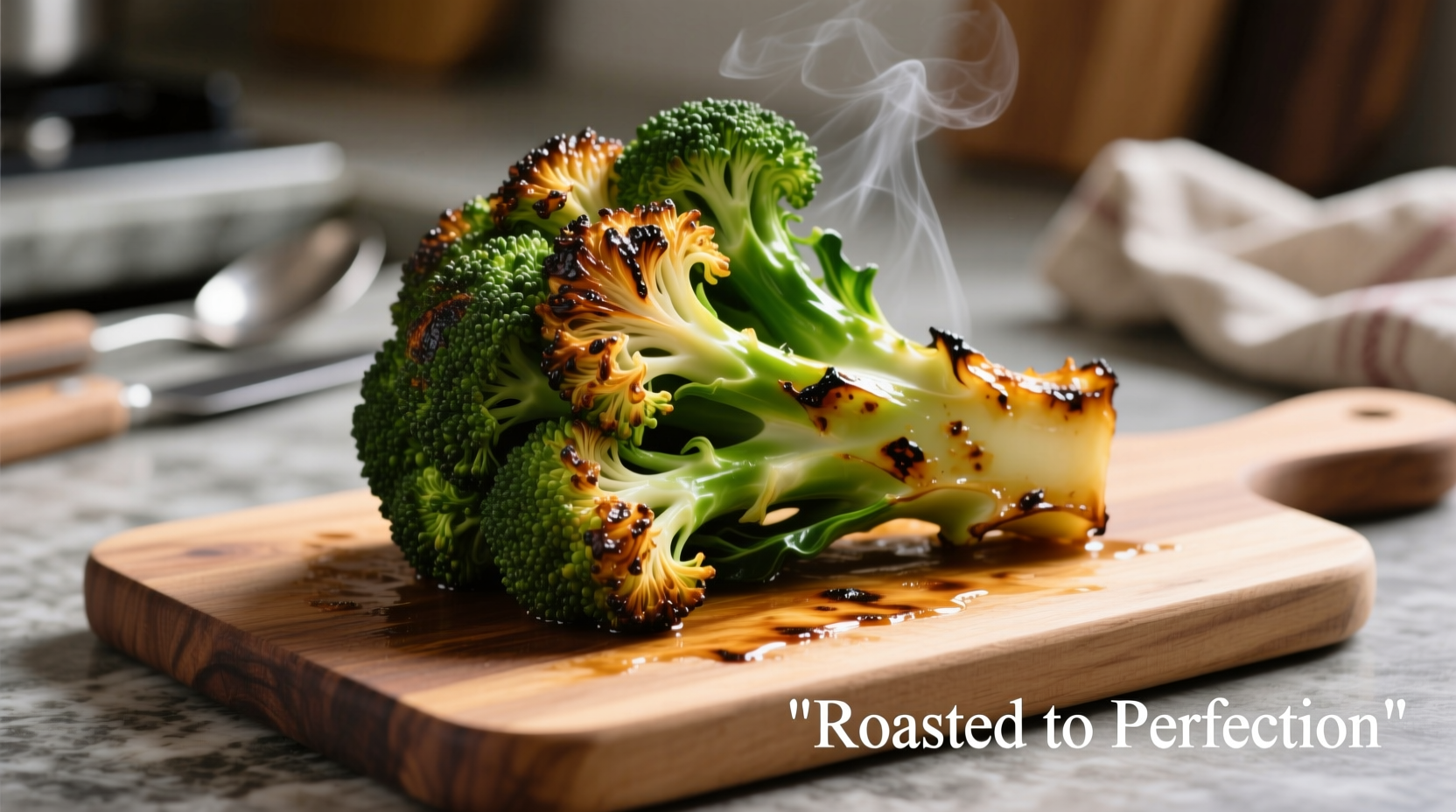Broccolette cooks best when roasted at 425°F (220°C) for 20-25 minutes with olive oil, salt, and garlic until caramelized and tender-crisp. This hybrid vegetable requires less cooking time than regular broccoli but more than broccolini, with optimal results achieved through high-heat methods that enhance its natural sweetness while preserving nutritional value.
Unlock Perfectly Cooked Broccolette Every Time
Broccolette, that delicious hybrid between broccoli and Chinese kale, deserves more attention in your kitchen. Unlike its more common cousins, this vegetable offers a unique flavor profile with tender stems and delicate florets that cook faster than standard broccoli but hold up better than broccolini. Getting it right transforms this often-overlooked vegetable into a show-stopping side dish that complements everything from grilled meats to simple pasta dishes.
| Vegetable Type | Stem Thickness | Cooking Time | Flavor Profile |
|---|---|---|---|
| Broccolette | Medium (¼ inch) | 15-25 minutes | Sweet, mild, slightly earthy |
| Broccoli | Thick (½ inch+) | 20-30 minutes | Stronger, more bitter |
| Broccolini | Thin (⅛ inch) | 10-15 minutes | Delicate, grassy |
Why Broccolette Deserves Your Attention
Developed through traditional cross-breeding in the 1990s, broccolette (also known as baby broccoli or asparation) combines the best qualities of broccoli and Chinese kale. According to USDA FoodData Central, one cup of cooked broccolette provides 135% of your daily vitamin C needs, 27% of vitamin A, and significant amounts of fiber and folate. Its nutritional profile makes it an excellent choice for health-conscious cooks who don't want to sacrifice flavor.

Essential Preparation Techniques
Before cooking, proper preparation ensures even cooking and maximum flavor. Start by trimming just ½ inch from the bottom of the stems. Unlike regular broccoli, broccolette's stems are tender enough to eat without peeling, but they should be uniform in thickness. For consistent results, separate florets from thicker stems and cut stems into 2-inch pieces.
Professional chefs recommend a quick 30-second blanch in salted boiling water followed by an ice bath when preparing broccolette for salads or cold dishes. This technique, documented by the American Chemical Society's food chemistry research, preserves chlorophyll (keeping the vibrant green color) while reducing bitterness without fully cooking the vegetable.
Mastering the 4 Best Cooking Methods
1. High-Heat Roasting (Most Flavorful Method)
Preheat your oven to 425°F (220°C). Toss 1 pound of prepared broccolette with 1½ tablespoons olive oil, 2 minced garlic cloves, ½ teaspoon sea salt, and freshly cracked black pepper. Spread in a single layer on a parchment-lined baking sheet. Roast for 20-25 minutes, flipping halfway, until edges are caramelized and stems are tender-crisp.
The Maillard reaction that occurs during roasting enhances broccolette's natural sugars, creating complex flavor compounds that simple steaming cannot achieve. For restaurant-quality results, finish with a squeeze of lemon juice and a sprinkle of red pepper flakes.
2. Quick Sautéing (Weeknight Dinner Solution)
Heat 1 tablespoon of avocado oil in a large skillet over medium-high heat. Add broccolette and ¼ cup of water, then cover and steam for 3 minutes. Uncover, increase heat to high, and cook for 5-7 minutes until water evaporates and vegetables develop charred spots. Finish with 1 teaspoon of soy sauce or tamari for umami depth.
3. Steaming (Preserves Maximum Nutrients)
Place broccolette in a steamer basket over 1 inch of simmering water. Cover and steam for 5-7 minutes until bright green and tender-crisp. According to FDA food safety guidelines, properly steamed vegetables maintain up to 90% of their water-soluble vitamins compared to boiling. For extra flavor, add lemon slices or fresh herbs to the steaming water.
4. Grilling (Summer Entertaining Favorite)
Toss broccolette with olive oil and seasonings, then place directly on a preheated grill (400°F/200°C). Cook for 8-10 minutes, turning occasionally, until grill marks appear and stems are tender. The direct heat creates delicious char while maintaining crisp-tender texture.
Flavor Pairing Science
Broccolette's mild flavor profile makes it incredibly versatile. Food chemistry research shows that its glucosinolates (compounds responsible for cruciferous vegetables' health benefits) pair exceptionally well with:
- Fat-based dressings (olive oil, tahini) which increase absorption of fat-soluble vitamins
- Acidic components (lemon, vinegar) that balance natural bitterness
- Umami-rich ingredients (miso, Parmesan, mushrooms) that enhance overall flavor perception
For a complete flavor experience, try the "flavor triangle" approach: combine one element from each category (fat + acid + umami) with your cooked broccolette.
Avoid These 3 Common Mistakes
- Overcrowding the pan - Creates steam instead of caramelization. Use a large baking sheet with space between pieces.
- Underseasoning - Broccolette needs more salt than you might expect. Season in layers: before cooking, during, and after.
- Ignoring stem thickness variation - Thicker stems need more time. Arrange thicker pieces toward the oven's back where it's hotter.
Storage and Leftover Tips
Store raw broccolette unwashed in a perforated plastic bag in your refrigerator's crisper drawer for up to 5 days. Cooked broccolette keeps well for 3-4 days in an airtight container. When reheating, add a splash of water and cover to prevent drying out. For meal prep, roast broccolette slightly underdone (15-18 minutes) as it will finish cooking when reheated.











 浙公网安备
33010002000092号
浙公网安备
33010002000092号 浙B2-20120091-4
浙B2-20120091-4